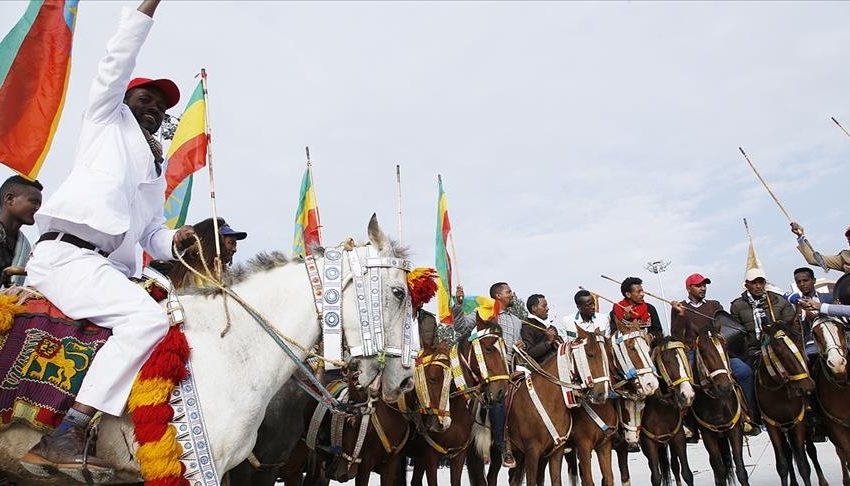
Ethiopia’s Civil War and The Realities It Has Created
Source: Andrew DeCort
November 3, 2021
The Ethiopian civil war has been raging for a year as of today. It’s a day of great grief for everyone who loves people and loves Ethiopia.
From the beginning, its defenders described the war as an existential necessity for their survival and salvation. They insisted it would end quickly and lead to a peaceful, prosperous future.
What has the war achieved after one year? Let us look outward and look inward together. The following facts are soul-shattering but real nevertheless.
The elites who failed to prevent the war have co-created these eleven realities:
Death, displacement, devastation
- Mass death — tens of thousands of souls killed, including many civilians, all bearing the image of God.
- Mass displacement — millions of people, all bearing the image of God, uprooted, rendered homeless and helpless.
- Mass hunger — hundreds of thousands of people, all bearing the image of God, in famine conditions with crushing reports of starvation.
- Mass destruction of vital infrastructure for human wellbeing — roads, schools, hospitals, factories, historical heritage, and more.
Suffering children
- Children who grew up seeing mutilated bodies, hearing machine gun fire, losing their parents, and hiding from invasions and air raids.
- Children who grew up malnourished and stunted with life-long implications on their health and capacities.
- Children who grew up hearing the other image-bearer of God referred to as “the enemy” — “weeds,” “cancer,” “hyenas,” “donkeys,” “demons,” “evil.”
- Children, created to love, primed for hate, extremism, and radicalization.
Atrocity, trauma, depression
- The unleashing of horrific atrocities predictable in war, especially against the most vulnerable — massacres, rape, torture, looting of vital infrastructure, starvation.
- Unspeakable loss, suffering, and grief, including the crushing suspense of not knowing if loved ones are dead or alive to this day.
- Unbearable primary and secondary trauma amidst severely limited mental health resources.
- Millions and millions of people who live every day under the crushing cloud of endless bad news, endless sorrow, endless unpredictability, endless anticipation of someone else dying or something else falling apart.
Supercharged enmity
- Supercharged humiliation and hatred.
- The normalization of us vs them mindsets in which identity is largely formed in terms of being against someone else.
- The normalization of enemy-making, dehumanizing discourse and genocidal rhetoric.
- The mass-militarization of culture and glorification of violence.
- The mass-production of bitter memories.
- The mass-justification of logics of scape-coating and revenge.
- Supercharged border disputes and bitterness already sowing the seeds for the next war.
Degraded discourse and antitrust
- Intractable arguments about what actually happened, in a mostly closed, extremely polarized media environment.
- Intractable arguments about why it happened.
- Intractable arguments about how it might end.
- Enormous expended time, mental energy, imagination, and outrage that could have been invested in other, more constructive pathways for the country’s betterment.
- The shattering of public trust in news media.
Loss and waste
- A year of work more or less lost for millions of citizens.
- A year of education more or less lost for millions of students.
- Billions and billions of dollars that could have built hospitals, schools, and youth centers — fully lost on things that don’t grow, don’t nourish bodies, and don’t help kids learn.
Inner and domestic breakdown
- Unpublicized domestic abuse and divorces due to polarization in (often multi-ethnic) families.
- Unpublicized substance abuse increase due to sorrow and despair.
- Unpublicized increase of suicide due to unbearable pain, grief, and terror.
Brain drain
- Numerous elites who have left the country due to intimidation, exhaustion, and despair.
- Numerous young leaders who have chosen not to come back home due to fear and frustration.
- Depleted leadership capacity for the present and future.
Economic loss
- Hyper inflation.
- A crushed economy.
- Diminished tourism.
- Devastated local economies.
- Decreased investment.
- Crushed credit rating.
- Strained relations with historic allies and loss of AGOA status.
Demoralization
- The deafening silence of religious leadership to call for nonviolent solutions to the conflict out of reverence for God and love for neighbors (with extremely limited exceptions).
- The revelation of prominent religious leaders with openly racist and genocidal perspectives.
- The revelation of religious communities that are more loyal to political personalities and ethnic identities than sacred values.
- The non-leadership or open complicity of institutions in devastating violence who are tasked with fostering reconciliation.
- The emergence of very few impartial, truly critical, prophetic moral leaders.
The next war
The increasing likelihood of more wars after this one ends. Wars like this don’t really “end” in the hearts of millions of people. In many ways, this war is preparation for future wars in war-traumatized generations.
These questions are soaked in tears, stained in blood. But they must be asked:
- Was all of this an “existential necessity” for anyone’s survival?
- Wasn’t all of this predictable from before the war even started?
- Does any of this move Ethiopia’s diverse people closer to peace and prosperity?
- Isn’t this the madness of power-hungry, egocentric elites?
This war has accomplished a great deal. But these accomplishments have been evil from a religious-moral perspective and foolish from a pragmatic, self-interested perspective.
At this point, who would dare to suggest a nonviolent way forward? Those who called for an alternative to war have been repeatedly insulted and ridiculed as impractical and traitorous.
But what about the eleven facts above is practical or patriotic? The war isn’t working for anyone except power-hungry elites across sides who speak about “sacrifice” and live in safety. It’s the ordinary people who are paying the price.
What if nonviolence is still possible? Courageous souls committed to shared human dignity and security must try. I have no easy answers or quick solutions. But these practices make a difference:
- Introspection: What is inside of me that leads to arrogance, disrespect, and conflict? What if I and my side have blind spots and need to hear other perspectives? What if our certainty is too simple?
- Empathy: What does the other’s pain feel like? Is it that different from my/our pain? Do I want any children to suffer? Am I willing to get what I want at the cost of children suffering?
- Dialogue: What if we can talk together — to express our pain, to share our values, to seek basic pillars of agreement and ways to resolve disagreement?
This is a day of mourning. Let us weep together and hurt together and, somehow, hope together.
Cry out for unconditional ceasefire, uninterrupted aid, and values-based dialogue.
